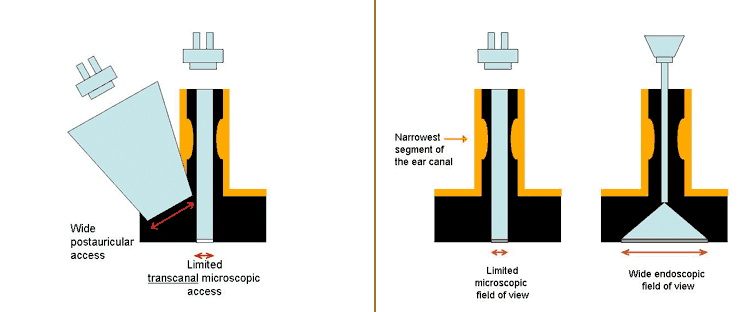Rationale for Endoscopic Ear Surgery
In clear contrast to the impact of the introduction of endoscope in most surgical disciplines, the practice of ear surgery has changed little and it continues to be the domain for the microscope. Depending on the task at hand, there are many distinctions that would make the endoscope a better instrument than the microscope and vice versa. We all need to master working with both instruments to better understand and treat pathologies of the ear. The objective of this group and this web site is to neutralize these longstanding biases toward the microscope and to get all of us to use the best instrument in the best way possible to help our patients.
The ability to place the surgeons eyes within the ear cavity using angled endoscopes, allows the operator a contextual understanding of the anatomy that is difficult to match using the microscope. The disease/ anatomical interface is better appreciated. This improved anatomical understanding, in turn provides confidence in surgical procedures both endoscopically and microscopically.
When compared to the microscope, two distinct advantages are present with the endoscope.
- The Objective lens is placed within the ear canal or middle ear, which allows for an all-encompassing contextual view of the disease/ anatomy interface. In contrast, the traditional microscopic method relies on removal of significant amounts of normal bone and soft tissue, often with removal of intact structures to fully observe the disease extent.
- The live image used by the surgeon is the same one that everyone else in the operating room is observing. This simultaneous viewing significantly increases engagement, teaching opportunities and interest in the surgical procedure from all present in the OR.

The use of the endoscope enables the surgeon to visualize past the shaft of larger surgical instruments, such as drills and curettes, and allows better visualization of anatomical structures.
To view the up to date research on Endoscopic Ear Surgery, please visit the link below.
